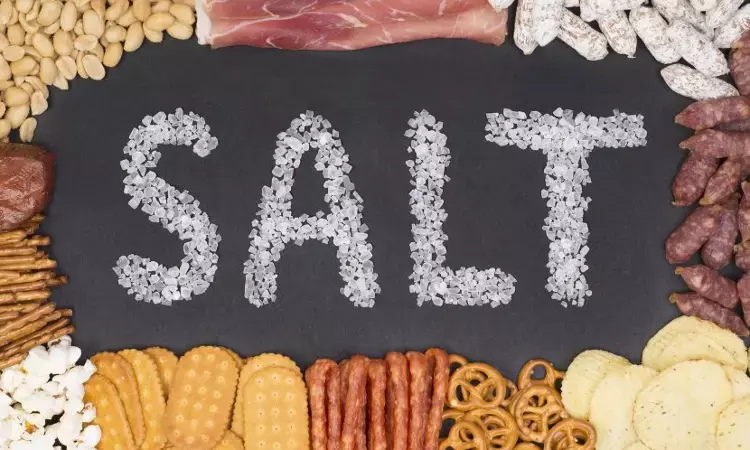- Home
- Medical news & Guidelines
- Anesthesiology
- Cardiology and CTVS
- Critical Care
- Dentistry
- Dermatology
- Diabetes and Endocrinology
- ENT
- Gastroenterology
- Medicine
- Nephrology
- Neurology
- Obstretics-Gynaecology
- Oncology
- Ophthalmology
- Orthopaedics
- Pediatrics-Neonatology
- Psychiatry
- Pulmonology
- Radiology
- Surgery
- Urology
- Laboratory Medicine
- Diet
- Nursing
- Paramedical
- Physiotherapy
- Health news
- Fact Check
- Bone Health Fact Check
- Brain Health Fact Check
- Cancer Related Fact Check
- Child Care Fact Check
- Dental and oral health fact check
- Diabetes and metabolic health fact check
- Diet and Nutrition Fact Check
- Eye and ENT Care Fact Check
- Fitness fact check
- Gut health fact check
- Heart health fact check
- Kidney health fact check
- Medical education fact check
- Men's health fact check
- Respiratory fact check
- Skin and hair care fact check
- Vaccine and Immunization fact check
- Women's health fact check
- AYUSH
- State News
- Andaman and Nicobar Islands
- Andhra Pradesh
- Arunachal Pradesh
- Assam
- Bihar
- Chandigarh
- Chattisgarh
- Dadra and Nagar Haveli
- Daman and Diu
- Delhi
- Goa
- Gujarat
- Haryana
- Himachal Pradesh
- Jammu & Kashmir
- Jharkhand
- Karnataka
- Kerala
- Ladakh
- Lakshadweep
- Madhya Pradesh
- Maharashtra
- Manipur
- Meghalaya
- Mizoram
- Nagaland
- Odisha
- Puducherry
- Punjab
- Rajasthan
- Sikkim
- Tamil Nadu
- Telangana
- Tripura
- Uttar Pradesh
- Uttrakhand
- West Bengal
- Medical Education
- Industry
Very high sodium Diet Shows Promising Results for Treatment of POTS: Study

Studies have demonstrated that POTS patients have a decreased volume of plasma and high serum norepinephrine levels that occur with standing. It would be reasonable to assume, therefore, that increasing oral sodium intake would have a salutary effect on the physiologic derangements that occur in POTS.
In a recent study, researchers have found evidence on the effect of a high sodium diet in POTS. They reported that a high-sodium diet could cause a smaller increase in heart rate and lower norepinephrine level, plasma renin activity (PRA), and aldosterone level while upright. A very high sodium load (6.9 g) over 5 full days improves the parameters associated with postural orthostatic tachycardia syndrome (POTS) researchers found.
The study findings were published in the Journal of the American College of Cardiology on April 26, 2021.
High sodium intake is recommended for the treatment of postural tachycardia syndrome (POTS) to counteract hypovolemia and elevated plasma norepinephrine that contributes to excessive orthostatic tachycardia but, evidence of its efficacy is not available. Therefore, Dr Emily M. Garland and her team conducted a study to test whether a high sodium (HS) diet reduces orthostatic tachycardia (Δ heart rate) and upright heart rate compared with low sodium (LS) diet in POTS patients and further assessed its effect on plasma volume (PV) and plasma norepinephrine.
In this crossover study, researchers included a total of 27 participants, among which 14 were POTS patients and 13 were healthy control subjects (HC). They received LS (10 mEq sodium/day) or HS (300 mEq sodium/day) diet for 6 days. The researchers measured the supine and standing heart rate, blood pressure, serum aldosterone, plasma renin activity, blood volume, and plasma norepinephrine and epinephrine.
Key findings of the study were:
- Upon analysis, the researchers found that the HS diet reduced upright heart rate and Δ heart rate compared with the LS diet in POTS patients.
- They also found that total blood volume and PV increased, and standing norepinephrine decreased with the HS compared with the LS diet.
- However, they noted that compared with healthy controls, patients with POTS had higher upright heart rates, greater change in heart rate (from supine to standing), and higher upright plasma norepinephrine, despite no statistically significant difference in overall plasma volume.
The authors concluded, "In POTS patients, high dietary sodium intake compared with low dietary sodium intake increases plasma volume, lowers standing plasma norepinephrine, and decreases Δ heart rate."
For further information:
Medical Dialogues Bureau consists of a team of passionate medical/scientific writers, led by doctors and healthcare researchers. Our team efforts to bring you updated and timely news about the important happenings of the medical and healthcare sector. Our editorial team can be reached at editorial@medicaldialogues.in.
Dr Kamal Kant Kohli-MBBS, DTCD- a chest specialist with more than 30 years of practice and a flair for writing clinical articles, Dr Kamal Kant Kohli joined Medical Dialogues as a Chief Editor of Medical News. Besides writing articles, as an editor, he proofreads and verifies all the medical content published on Medical Dialogues including those coming from journals, studies,medical conferences,guidelines etc. Email: drkohli@medicaldialogues.in. Contact no. 011-43720751


